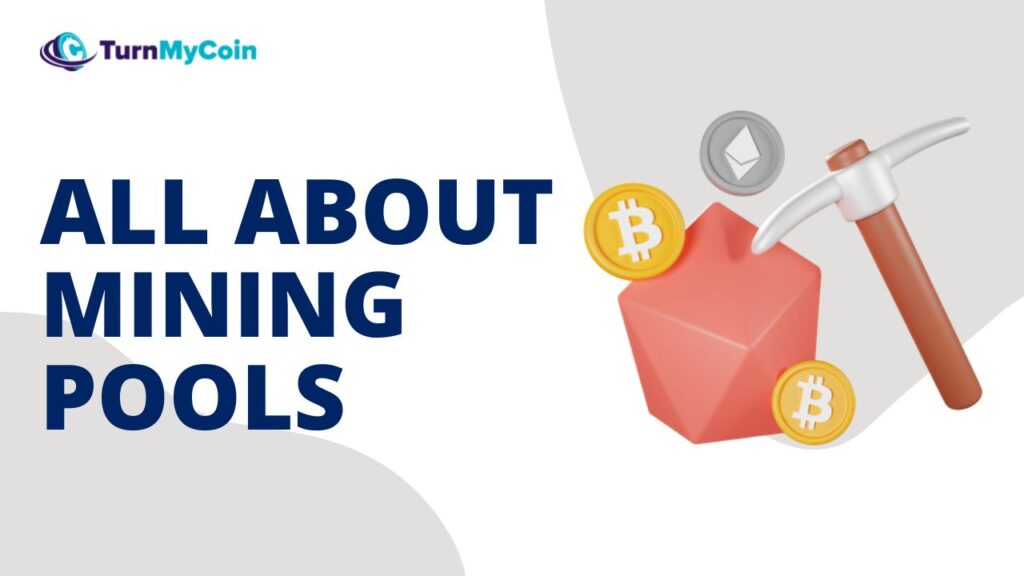Last updated on March 3rd, 2023 at 01:06 pm

Introduction
A mining pool is a cooperative team of cryptocurrency miners. These are who pool their computing power across a network to increase the likelihood of discovering a block or successfully mining for cryptocurrency.
A group of miners who pool their computing power together is known as a cryptocurrency mining pool.
Each individual miner in a pool contributes a portion of their processing power to the search for a block. The likelihood of finding a block or otherwise successfully mining for cryptocurrency is increased by mining pools’ use of these combined resources.
The pool’s members split any rewards received if the mining operation is successful. This reward is usually in the related currency. For Example, if you mine Bitcoin you will get a reward in Bitcoin.
So let us see more about:
- What is a mining pool?
- How does a Mining Pool Work?
- Types of Mining Pools
- Advantages & Disadvantages of Mining Pools
- 1. How does a Mining Pool Work?
- 2. Mining Pool Techniques
- 3. Benefits of a Mining Pool
- 4. Mining Pool’s drawbacks
- 5. Types of Mining Pools
- 6. How to choose the best Mining pool?
- 7. Why Pool’s difficulty of mining is more difficult than Blockchain?
- 8. What prevents miners from cheating in pool mining?
- 9. Mining in a pool versus mining alone.
1. How does a Mining Pool Work?
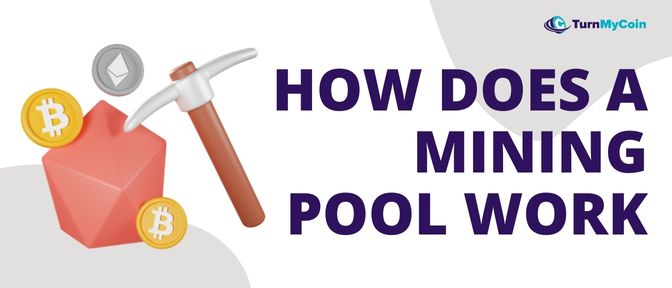
According to how much each contributor’s processing power or work contributed to the group, rewards are typically distributed among the participants. Individual miners may occasionally need to provide documentation of their labor in order to receive compensation.
Anyone who wants to earn money by mining cryptocurrencies has two options.
- They can go it alone with their own specialized equipment or
- Join a mining pool, where several miners and their equipment work together to increase their hashing output.
For instance, connecting 6 mining devices, each of which can produce 335 Mega hashes per second (MH/s). It can result in a total mining power of 2 Giga hashes, which will speed up the processing of the hash function.
So that is how the work happens in what is a mining pool.

2. Mining Pool Techniques
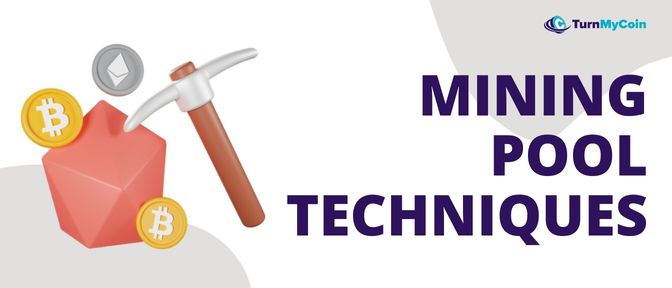
Different cryptocurrency mining pools operate in different ways. But many of the most well-liked mining pools follow a number of standard protocols.
- Among the most popular are proportional mining pools. Up until the point at which the pool is successful in finding a block, miners who contribute to the processing power of the pool receive shares. Following that, miners receive rewards based on the number of shares they own.
- Pay-per-share pools function somewhat similarly because each miner receives shares in exchange for their contribution. However, these pools offer immediate payouts regardless of when the block is discovered. A miner who contributes to this pool may exchange shares at any time for a proportional payout.
The functions will clear your thoughts about what is a Mining pool. - In contrast, peer-to-peer mining pools work to keep the pool’s organizational structure decentralized. As a result, they incorporate a separate pool-specific blockchain. That is intended to stop cheating by the pool’s operators and pool failure due to a single central problem.
3. Benefits of a Mining Pool
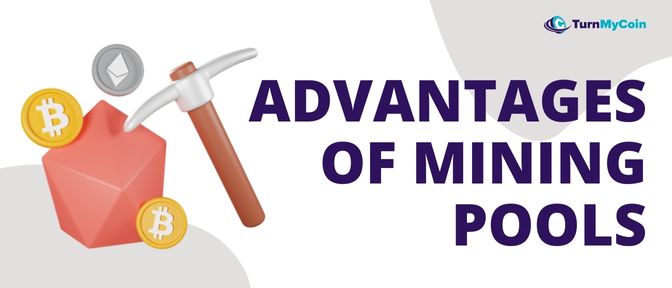
- Sharing of Costs: Despite the fact that success in individual mining results in full ownership of the reward. The odds of success are extremely slim due to the high power and resource requirements. For individuals, mining is frequently a losing endeavor. As the popularity of these digital currencies has increased, many cryptocurrencies have become more challenging to mine.
This is because the costs of electricity and the expensive hardware required to compete in the mining industry frequently outweigh the potential rewards. - Higher Success Rate: Mining pools increase the likelihood of profitability by requiring less investment from each participant in terms of hardware and electricity costs.
Teaming up with other miners significantly increases the success rate, whereas an individual miner may have little chance of finding a block and earning a mining reward.
Here is a list of the Best Mining Pools that you can join to mine your cryptos including Bitcoin.

4. Mining Pool’s drawbacks
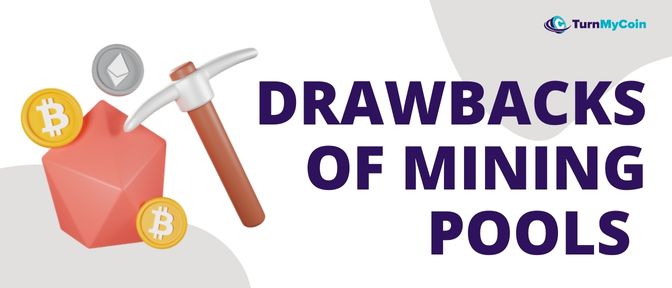
- Reduced Autonomy: Individuals give up some of their mining autonomy by joining a mining pool. Most of the time, they are constrained by rules established by the pool. Which may specify how the mining operation is conducted.
The profit share for an individual participating in a pool is lower because they must divide up any potential rewards.
Blockchain.com reports that only a few mining pools, including AntPool, Poolin, and F2Pool, control most bitcoin mining activity. - Control over Bitcoin Protocol: Although many pools try to be decentralized, these organizations consolidate much of the power to control the Bitcoin protocol. Some supporters of cryptocurrencies believe that the existence of a few strong mining pools contradicts the decentralized nature of bitcoin and other cryptocurrencies.
5. Types of Mining Pools

Three different kinds of mining pools exist in the crypto sphere. Explore the options for each type below.
5. 1 Cloud-based pools
Miners can earn rewards through cloud mining without worrying about hardware, electricity, or noise. Cloud mining service providers merely rent out their mining capacity. These businesses typically have sizable data centers with cloud mining machinery.
Contracts are signed by individuals who want to mine using the cloud and buy hash power from these businesses. Cloud mining is a popular cryptocurrency revenue stream for miners from nations with high energy costs. They make upfront payments in digital or fiat currencies to service providers.
A year or longer contracts with up to 1,000 Giga hashes per second are the norm for miners. Before entrusting a company with your money, consider reading thorough reviews of cloud mining providers or vendors. Look into the mining requirements they have for various types of digital assets.
5.2 Mining Farms
Often a warehouse or sizable data center, a mining farm is a mining pool with miners at a single location. You can find pictures of crypto mining farms online by searching for them, and you’ll see that they are simply spaces with many computers and servers.
Servers and power supplies are typically present in mining farms. Some cryptocurrency miners build their home mining farms, but they frequently experience issues with excessive energy use and computer overheating.
Large equipment cooler fans and ventilators help crypto mining farms solve these issues. These farms thus maximize hash rate and computing output.
5.3 Mining across multiple pools.
In search of the most lucrative cryptocurrency, multipool miners switch between them. Before making mining investments, they consider a currency’s exchange rates and network mining power. These miners also mine numerous alternative cryptocurrencies (altcoins), giving rise to the name “multipool mining”.

6. How to choose the best Mining pool?
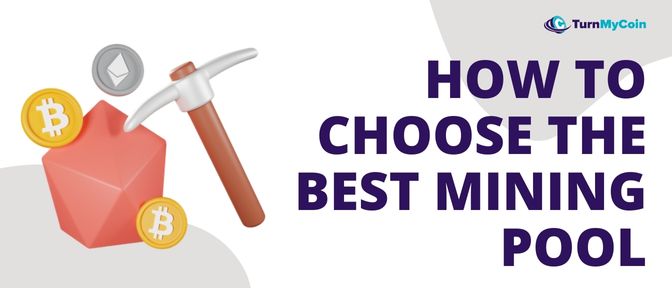
6.1. First, pick the best currency
Not all currencies are created equal; some pay more for the same amount of hash power to mine than others. If you are mining a currency with low profitability, you won’t make much money even if you have selected the best pool for that currency. This is one of the first steps about how to choose a mining pool.
Generally speaking, older and more established currencies are less profitable to mine with less powerful equipment, but this isn’t a hard and fast rule. Numerous online calculators, like What to Mine, can help you choose which currencies most deserve your hash power.
6.2 A solid reputation is essential
It is true that some pool owners are con artists, so you should avoid choosing a pool that takes your money or, worse yet, doesn’t pay at all.
Avoid blindly believing reviews, but if a pool receives many complaints and negative feedback, move on and disregard the pool because there is typically no smoke without fire.
6.3 Size Really Does Matter
The size of the pool should be taken into account in addition to reputation when selecting one. The maxim in this case is that size matters.
The number of connected miners and, most importantly, the pool hash rate, determine a pool’s size. Small pools with a low hash rate and fewer miners have little advantage over solo mining.
One issue with large pools is that they frequently have high difficulty, so even if this pool seems like the pool of your dreams, you might not be able to enter if your equipment isn’t powerful enough.
For this reason, you need to strike a balance between the pool’s size and your equipment’s strength. Finding a pool big enough to support your potentially low-end equipment shouldn’t be difficult because there are typically dozens or even hundreds of pools for a given currency. These are a few tips on how to choose a mining pool.
6.4 Rules and Past Payments of the Pool
When selecting a mining pool, payment thresholds should also be considered. The minimum payment may take months for a small miner to reach if it is high.
The currency also influences payment thresholds. There are currencies with low transaction fees; for them, the point is typically lower, such as the cryptocurrency equivalent of twenty cents or a dollar.
You can also look at the pool fee, but since they typically range from 1 to 2 percent, if they exist, the cost of joining a pool is almost never a significant consideration.
Of course, you don’t have to stick with just one pool; you can try a few and see which one(s) works best for you. With multiple pools, you will have to wait longer to receive your payout and pay more for each transaction.
This is not a big deal for coins with low payment thresholds and transaction costs, but it’s best to avoid splitting your work between multiple pools for coins like Monero since you might find that half of your earnings are lost to transaction costs.
You can check out our list of the Best Mining Pools here.

7. Why Pool’s difficulty of mining is more difficult than Blockchain?
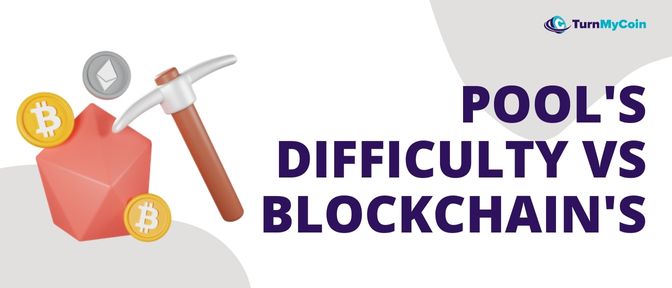
Considering that the objective is to track work attempted in a verifiable manner. Only one share would be found per block, and it would be found by the miner who solved the block if a pool used a difficulty level equal to the block difficulty. You created a long, convoluted, roundabout method of solo mining where all rewards would go to one shareholder.
The mining industry is not progressing, despite what many people think. Each hash’s likelihood of being a legitimate block hash is the same. It’s possible that your subsequent hash will yield a valid hash by chance, or it won’t. Nothing changes or advances.
The target your hash must be under when mining on a lower difficulty is much higher than that of the networks. After a sufficient number of hashes happen. Someone will eventually discover a hash that is lower than the network target and also lower than their pool target. Only for the purpose of tracking who is actually working and how much work they are producing in order to pay them fairly, the higher target (thus lower difficulty) is used.
8. What prevents miners from cheating in pool mining?
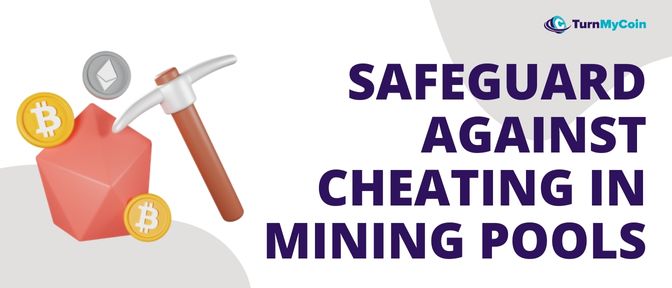
The block’s template, which you should be working on, is sent to you by the pool. If a block is actually discovered, it is tied to the block template you were given by the pool, i.e. the nonce that satisfies the proof-of-work difficulty is only legitimate because it also qualifies for the template.
You cannot steal the reward as it is included in the block template along with the transaction that transfers it to the pool operator.

9. Mining in a pool versus mining alone.
‘Pool fee’ is the only factor that matters when you Pool alone.
If you mine alone, you can expect to earn say 5 BTC blocks per day, which translates to mining a 50 BTC block on average every ten days. But with the growing difficulty in mining, this may come down to 2 blocks per month. Making even ht investment in your equipment useless.
If you mine in a pool, the pool fee is deducted immediately. A pool fee of 3% means a 3% reduction in earnings. However, there is an assurance of higher block mining and hence the success of getting a reward.
Additionally, most pools don’t charge transaction fees. However, your income is more steady. Your payments will be consistent and made on a regular basis.
A mining pool’s centralization is a drawback because most pools today have central nodes vulnerable to DDOS attacks. If these nodes are not configured properly, miners will sit idle when a DDOS occurs rather than switching to another pool or solo mining.
You should probably mine at a pool unless you have a lot of processing power (multiple ASICs).
Conclusion
I hope that by now you have an answer to various questions related to Mining Pools like:
- What is a mining pool?
- How to choose a mining pool?
- How does a mining pool work?
Mining pools have become necessary to get a reward as solo mining has a restriction with respect to capital investments. However, you should take appropriate steps in ensuring that you join the correct mining pool.
